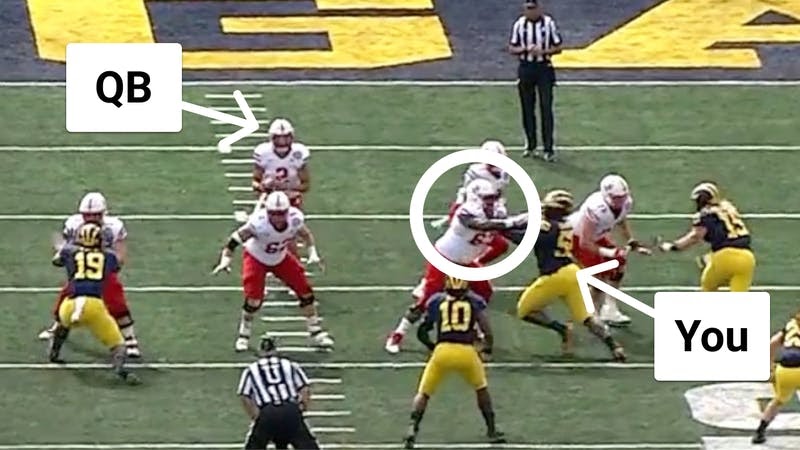
When I was coaching at Baldwin Wallace University, our defensive coordinator had a pretty simple philosophy for disrupting the opponents passing game, and I’d hear this coaching point often,
“The quarterback can’t pass if he’s on his a–!”
I can’t argue with that. It’s true! The best way to disrupt the timing and rhythm of our passing game, like any offense, is to harass, hit, and sack the quarterback.
Today I share a lesson from Craig Roh who had a lot of fun harassing quarterbacks in his 7 year CFL/NFL career.
For Craig, success came through having a calculated Rush Path. He put together a simple system for this that any coach or player can use to plan for how to get to the quarterback each week. His entire system for pass rush is in his Pass Rush Bible, Pass Rush Bible Complete Edition, and Pass Rush Bible Strategy Edition.
Here’s the system as shared by Craig:
How to calculate your rush path
It may not seem like it, but pass rushing is actually very mathematical. Just think you’re job is to affect the quarterback. Simple right? You just need to go from point A to point B. The problem with that is you have a big ole’ offensive lineman between you and the quarterback.
So unless you’re the hulk, you won’t be able to run a straight line through your man to the QB every single rush. That is why every rusher must calculate their rush path.
Identify the QB set point
The first step to determining your rush path is to figure out where the QB will set up to throw the ball. This is called his set point.
Studying the Qb set point is relatively simple. First, segment all your opponents passes into down and distance ranges. Your 3rd down segments should look like this…
3rd and 1-3
3rd and 4-6
3rd and 7-10
3rd and 10-15 and
3rd and 15+
Next, take a look at every clip in a segment and take note of where the QB sets up to pass.
For example, in this 3rd and 5 clip the QB sets up at 8 yards…
Once you’ve gone through each clip in a segment and have taken note of the QB’s set point, now you need to determine his most probable set point.
So, if you watched 4 clips in the 3rd and 7-10 segment and the QB’s set point was at 7 yards for clips 1-3 and 9 yards for clip 4 his most probable set point would be 7 yards.
That is because you have a 3/4 (75%) chance of the QB’s set point being at 7 yards vs. a 1/4 (25%) chance at 9 yards.
Choose your track
Once you’ve studied the QB set point you need to choose a track.
The two you can choose from are the tilt or speed track.
The speed track is a 90 degree upfield rush that should feel like racing in a 100M dash.
The tilt track on the other hand uses an angled approach to get to the QB. Your angle can range anywhere from a 45 – 75 degrees
What track you choose will ultimately be determined by where you contact your opponent (the contact point)
And where you contact your opponent will be determined by the QBs set point.
For example, if the QB’s set point is at 5 yards in a 3rd and 4 – 6 you will need to contact your opponent at 2 yards.
This gives you 3 yards of wiggle room to turn the corner without being pushed too high above the QB.
So to contact your opponent at 3 yards do you think you should use a speed track?
Absolutely not!
A speed track would put you much to high above the QB.
Rather you should use a tilt track in this situation so you can be on a path to affect the QB.
Interior rushers
The rush path for an interior lineman is a bit different than the path for an end.
You will only need a slight tilt if any when rushing.
If you rushing from a 3 or 1 technique the QB is just about in front of you. So from a mathematical stand point it doesn’t make sense to aggressively tilt because it will point you off the path of the QB
When I was on the Panthers we had this great saying called G2X.
It means get to the X. And yes you guessed it the X represented the set point of the QB.
So for every week our coach studied the most probable set point for 3rd and long.
After determining the set point we put a rubber X on the ground during 1-on-1s to make sure we were always on a rush path to “Get to the X”.
That X helped us to practice our rush paths and make sure we didn’t rush too high or too low.
It was also really fun too when you beat your man and you stomped your foot on that X.
We all had a huge sense of pride being G2X rushers.
Our coach even made shirts for it…
A final word
The whole point of pass rushing is to affect the QB. And if you are not on a path to do so what’s the point.
You’re not out here to waste energy and just run up the field. You’re job is to affect the quarterback. Do your job!
If you liked this breakdown, Craig Roh has written a whole book on pass rush called The Pass Rush Bible that you can now get on Coachtube.
Thank you to Craig for sharing this lesson for getting to the quarterback! Be sure to check out his Pass Rush Bible, Pass Rush Bible Complete Edition, and Pass Rush Bible Strategy Edition and double your HIts, Hurries, and Sacks!


